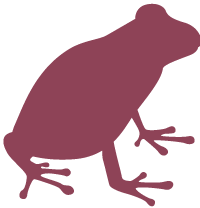 Endangered amphibians in Kyoto Prefecture
Endangered amphibians in Kyoto Prefecture
Kyoto Prefecture is home to 22 amphibian species from eight families and two orders, of which 21 species from eight families and two orders are native. One species is introduced. The Kyoto Prefecture Red Data Book lists 19 species of native amphibians, including no extinct, four critically endangered, one endangered, three vulnerable, and 11 near threatened & least concern species. Accordingly, 86.3% of all species in the prefecture are threatened.
The List of Biological and Geological Components of the Natural Environment of Kyoto Prefecture (Japanese)
Kyoto Prefecture Red List (Japanese)
Kyoto Prefecture Red List
| Extinct | Critically Endangered | Endangered | Vulnerable | Near Threatened & Least Concern | Sum | Total number of species in Kyoto | |
|---|---|---|---|---|---|---|---|
| Amphibians | 0 | 4 | 1 | 3 | 11 | 19 | 22 |
Typical endangered species
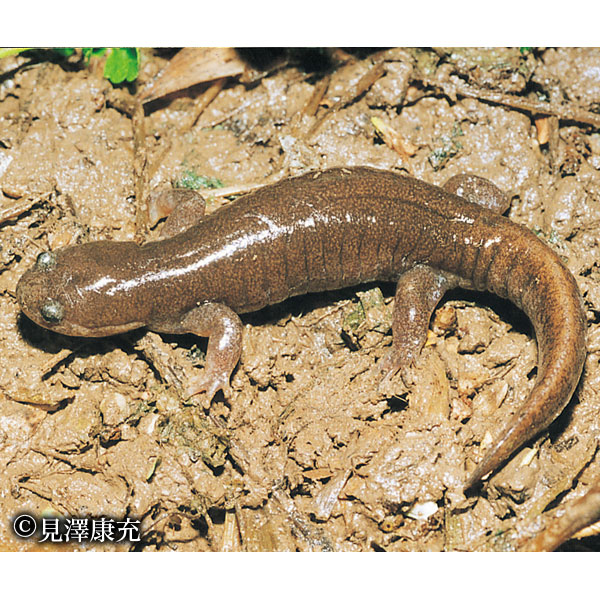
ABESANSHOUO
Common Name(s)
Abe's salamander
Order
Caudata
Family
Hynobiidae
Scientific Name
Hynobius abei
(Sato, 1934)
Kyoto Prefecture Red List
Critically Endangered
IUCN RED LIST
CR
Outline
Male and female Abe's salamanders are about 107 mm and 96 mm, respectively, in total length. They inhabit the areas surrounding forests. In early winter, they breed in spring water.
Endemic to Japan
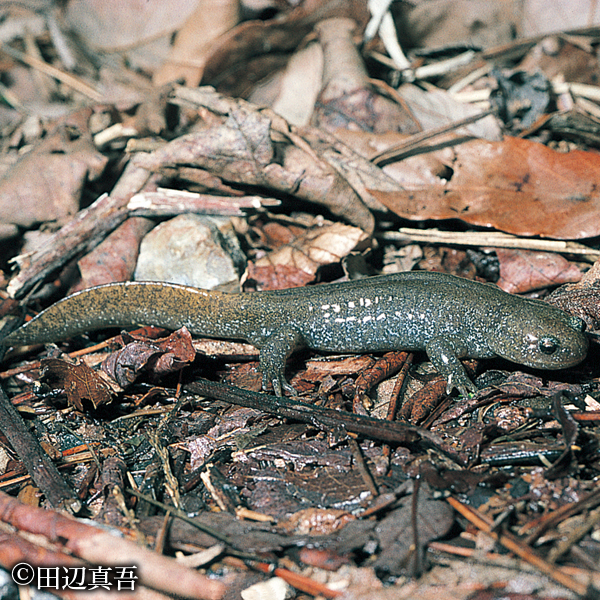
KASUMISANSHOUO
Common Name(s)
Clouded salamander
Order
Caudata
Family
Hynobiidae
Scientific Name
Hynobius nebulosus
(Temminck & Schlegel, 1835)
Kyoto Prefecture Red List
Critically Endangered
IUCN RED LIST
LC
Outline
Clouded salamanders inhabit forest floors and grass fields in flat to low-mountain areas. They hide in shallow soils or under fallen leaves, fallen trees, or stones.
Endemic to Japan
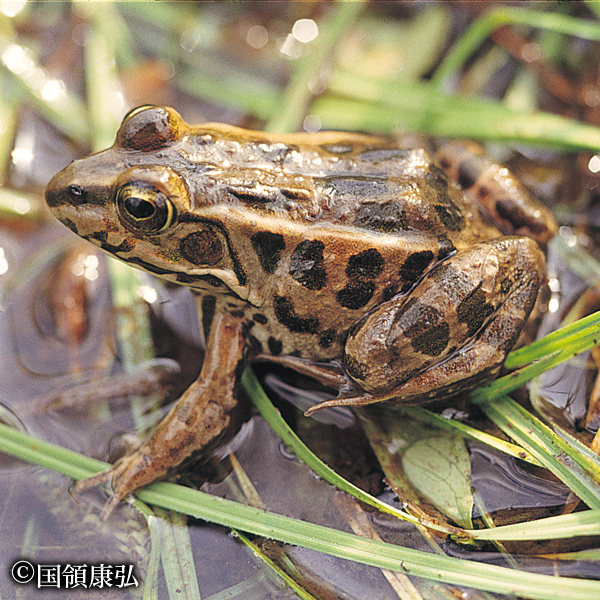
NAGOYADARUMAGAERU
Common Name(s)
Nagoya Daruma pond frog
Order
Anura
Family
Ranidae
Scientific Name
Pelophylax porosus brevipodus
(Ito, 1941)
Kyoto Prefecture Red List
Critically Endangered
IUCN RED LIST
LC
Outline
Habitats of the Nagoya Daruma pond frog include lowland marshes, paddy fields, and grass fields along rivers. They feed on insects and spiders.
Endemic to Japan
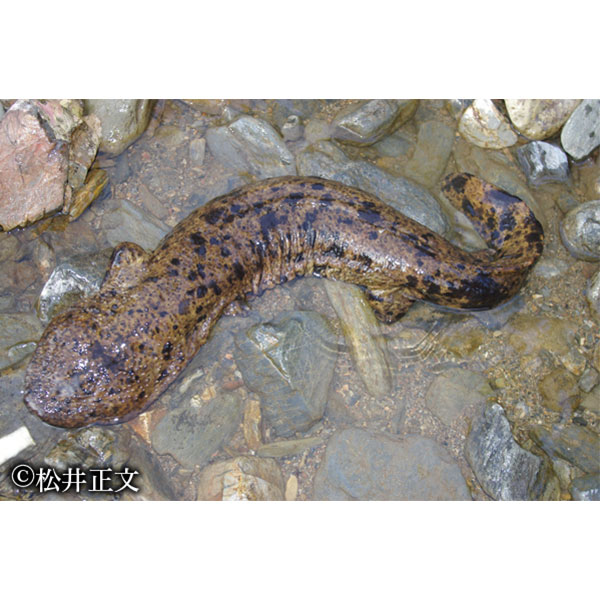
OSANSHOUO
Common Name(s)
Japanese giant salamander
Order
Caudata
Family
Cryptobranchidae
Scientific Name
Andrias japonicus
(Temminck, 1836)
Kyoto Prefecture Red List
Endangered
IUCN RED LIST
NT
Outline
The total length ot the Japanese giant salamander is 650 mm on average and, occasionally, is in excess of 1 m. Japanese giant salamanders inhabit the upper and middle reaches of rivers. They hide between stones or in holes in river banks.
Endemic to Japan
Special Natural Monument
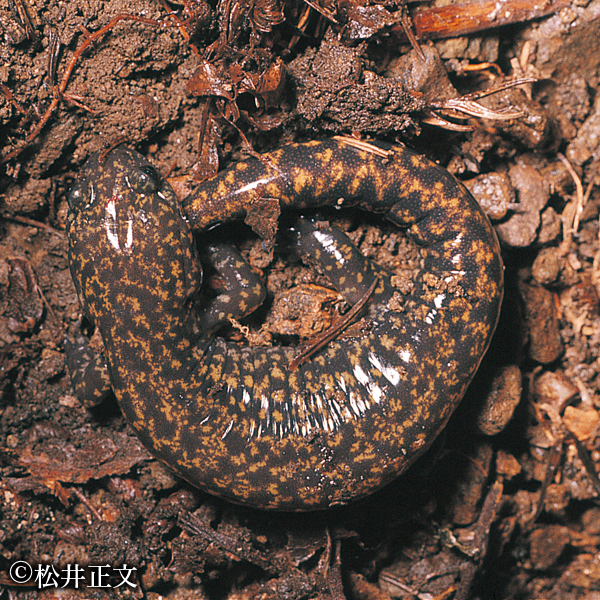
HIDASANSHOUO
Common Name(s)
Hida salamander
Order
Caudata
Family
Hynobiidae
Scientific Name
Hynobius kimurae
(Dunn, 1923)
Kyoto Prefecture Red List
Vulnerable
IUCN RED LIST
LC
Outline
Hida salamanders have a purple-brown dorsal surface with sporadic yellow dots in adult form. They live on the forest floors and breed in the headwaters of mountain streams during February, March, and April.
Endemic to Japan
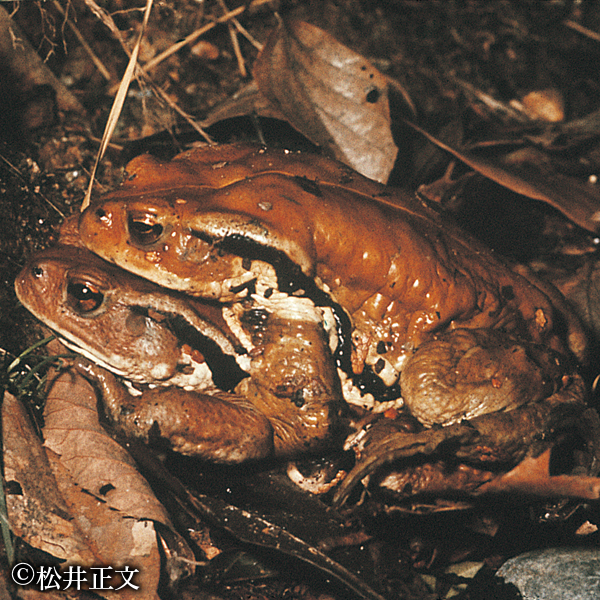
NIHONHIKIGAERU
Common Name(s)
Japanese toad
Order
Anura
Family
Bufonidae
Scientific Name
Bufo japonicus japonicus
(Temminck & Schlegel, 1838)
Kyoto Prefecture Red List
Vulnerable
IUCN RED LIST
LC
Outline
Male and female Japanese toads are about 110 mm and 115 mm, respectively, in length. They breed in ponds during February and March. Their egg masses resemble a long cord.
Endemic to Japan
Contact: Kyoto Prefecture Department of the Environment
Nature and Environmental Conservation Division
Tel 075-414-4706 FAX 075-414-4705
e-mail: shizen-kankyo@pref.kyoto.lg.jp
〒602-8570 Yabunouchi-cho, Nishiiru, Shinmachi, Shimodachiuri-dori, Kamigyo-ku, Kyoto-shi
